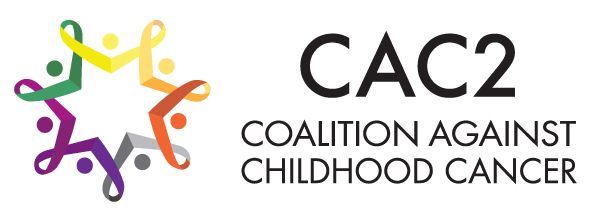Charitable Gift Giving
Charitable giving is an opportunity to share with others. Your donation at any level increases the chances of children with childhood cancers to be cured for a long productive life.
There are many reasons to give, including: commitment to a cause, compassion, desire to leave a legacy and a wish to share one's fortune for the benefit of others. The U.S. tax law is designed to encourage these planned charitable gifts.
Check with your tax advisor on the tax benefits available for charitable contributions. You can depend on Stop Children’s Cancer to invest your contribution wisely benefiting those with childhood cancers.
Several Options of Charitable Giving
Donations may be given by cash or valuable assets such as stocks, real estate or other investments. Stop Children's Cancer can be added to your will, trust or as a life insurance beneficiary.
These methods allow a donor to make a gift now, while retaining an income for life: Charitable Remainder Annuity Trust, Charitable Remainder Unitrust, Pooled Income Fund or Charitable Gift Annuity.
A Charitable Lead Trust (CLT) assigns an income interest to the charity for a period of designated years or the lifetime of a person; after which, the remainder passes to the donor’s heirs.
Potential Financial Benefits of Charitable Gifts
Donations to charitable organizations can: provide an income tax deduction, in many cases reduce or delay payment of tax, possibly increase personal after-tax cash flow and/or possibly increase the amount passing to one’s heirs.
Charitable Giving Techniques
Planning in advance can be beneficial to your heirs. Gifts to charities during lifetime or at death will reduce the size of the gross taxable estate. An additional benefit of lifetime gifts is that an income tax deduction is available within certain percentage limitations.
Split-Interest Gifts
We understand that sometimes you can't give a contribution all at once. If you are able to contribute the entire asset during your lifetime, you may want to consider a split-interest, deferred gift.
The ownership interests in an asset can be split or divided into two parts, stream of income payable for one or more lifetimes or a term of years (the income interest) and the principal remaining after the income term (the remainder interest). In a split-interest gift, one portion is given in trust for the charity and the other portion is retained.
Charitable Remainder Plans
When the estate owner retains the right to the income but transfers his or her rights in the remainder to a trust, it is called a charitable remainder trust.
To qualify for an income tax deduction the trust must be a unitrust, an annuity trust, a pooled income fund, or a charitable gift annuity.
- Charitable remainder unitrust (CRUT): In this type of trust the donor usually retains a right to a fixed percentage of the fair market value of the trust assets, re-valued annually. If the value of the assets increases, so does the annual payout and vice versa. See IRC Sec. 664(d)(2).
- Charitable remainder annuity trust (CRAT): This trust is similar to the unitrust but instead pays a fixed dollar amount year after year. The increases or decreases in the value of the trust do not affect the payments. See IRC Sec. 664(d)(1).
- Pooled income fund: Assets are transferred to a common investment fund maintained by the charity. Each donor receives annually a share of the income from the fund, in proportion to the contribution made. These annual payments continue for the lifetimes of the donor and spouse. At death, the corpus of the donor’s gift, together with any capital gains, passes to the charity. Payments will increase or decrease with the investment performance of the fund. See IRC Sec. 642(c)(5).
- Charitable gift annuity: The donor transfers the asset directly to the charity in exchange for the charity’s agreement to pay a fixed lifetime annuity.
The amount of the income tax deduction is dependent upon the percentage of the income interest and the period over which it will be paid (usually the life of the donor and his or her spouse). This is determined from the mortality tables published by the government.
Charitable Income Trusts
A charitable income or lead trust is the reverse of the charitable remainder trust.
The income interest is assigned to the charity, usually for a period of years, and then the remainder generally passes to the donor’s heirs. The amount of the estate tax deduction and the amount left for the heirs will depend upon the number of years and percentage of the annual payments and the investment results of the trustee.
These are a few of the more popular techniques used to donate to charities like Stop Children’s Cancer. We understand each personal financial situation is unique and should be reviewed individually. If you are interested in learning more about Planned Giving strategies, let Stop Children’s Cancer help. Our executive board consists of some of the area's top CPAs and financial planners who specialize in Planned Giving. Please e-mail us at info@stopchildrenscancer.org to schedule a personal analysis.
Retirement Distributions
If you are receiving required minimum distributions (RMD) from an Individual Retirement Account or other distributions from retirement plans, please consider contributing any excess funds above your necessary expenses to Stop Children’s Cancer. Generally, a qualified charitable distribution is an otherwise taxable distribution from an IRA (other than an ongoing SEP or SIMPLE IRA) owned by an individual who is age 70½ or over that is paid directly from the IRA to a qualified charity. Your qualified charitable distributions can satisfy all or part the amount of your required minimum distribution from your IRA. The custodian generally reports the full amount of the charitable distribution on the line for IRA distributions and then on the line for the taxable amount, they enter zero if the full amount was a qualified charitable distribution.





